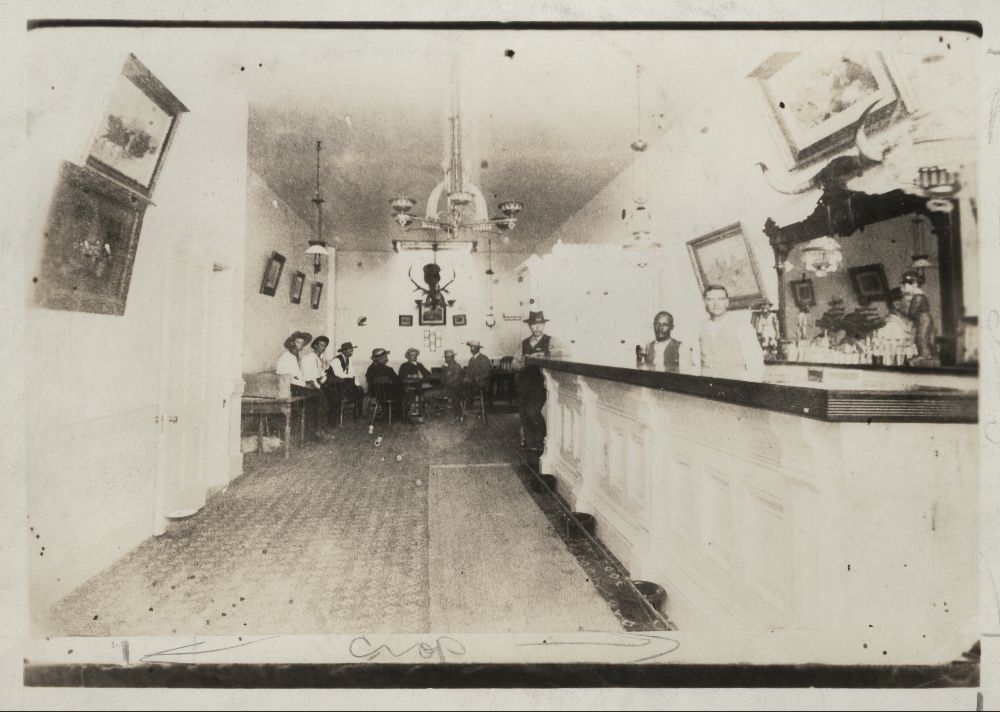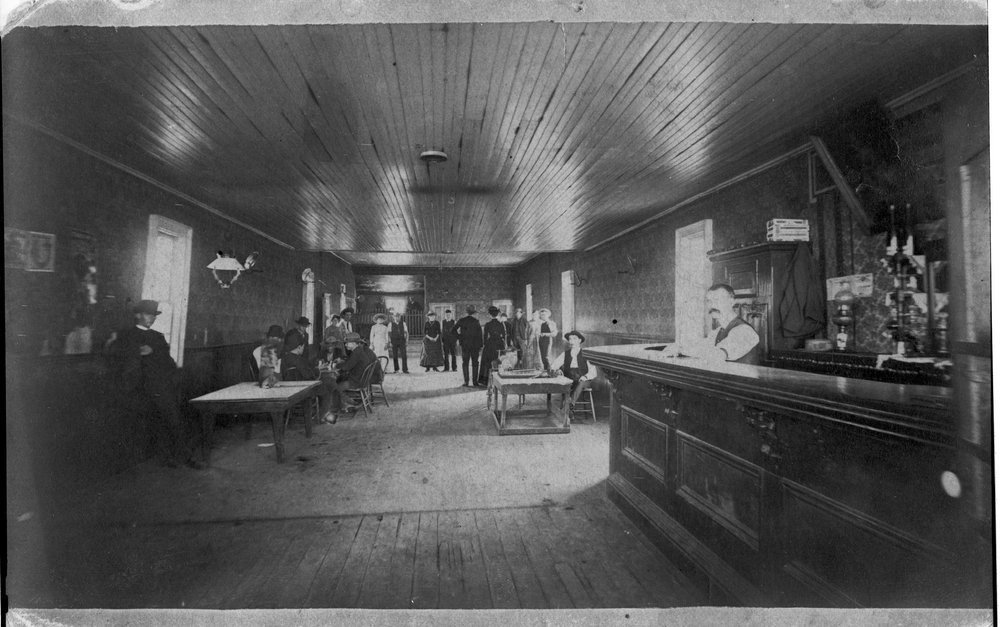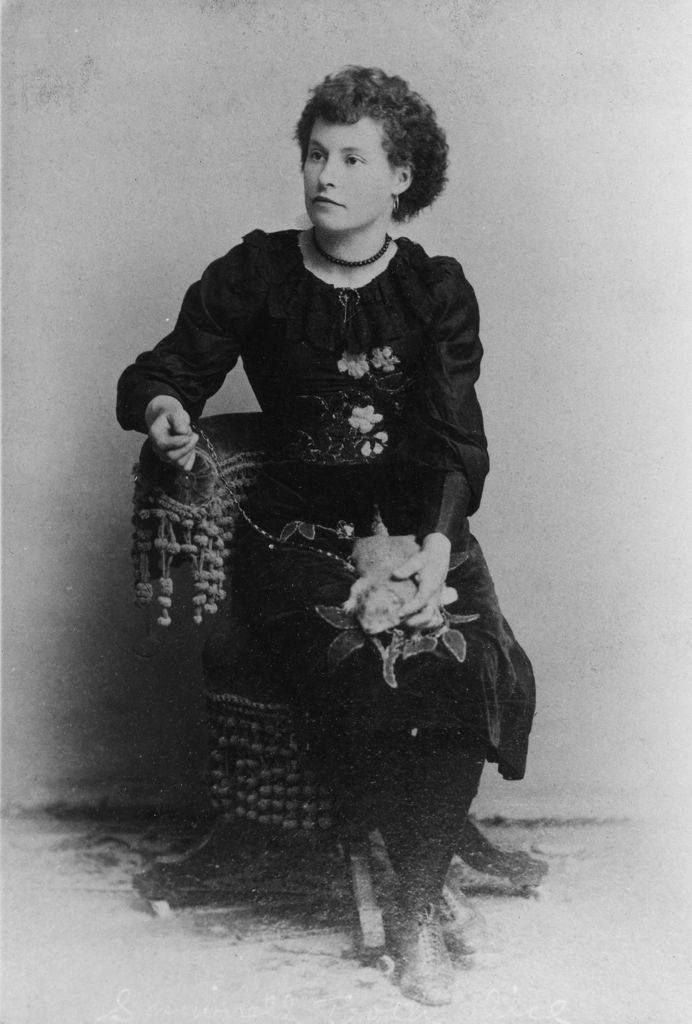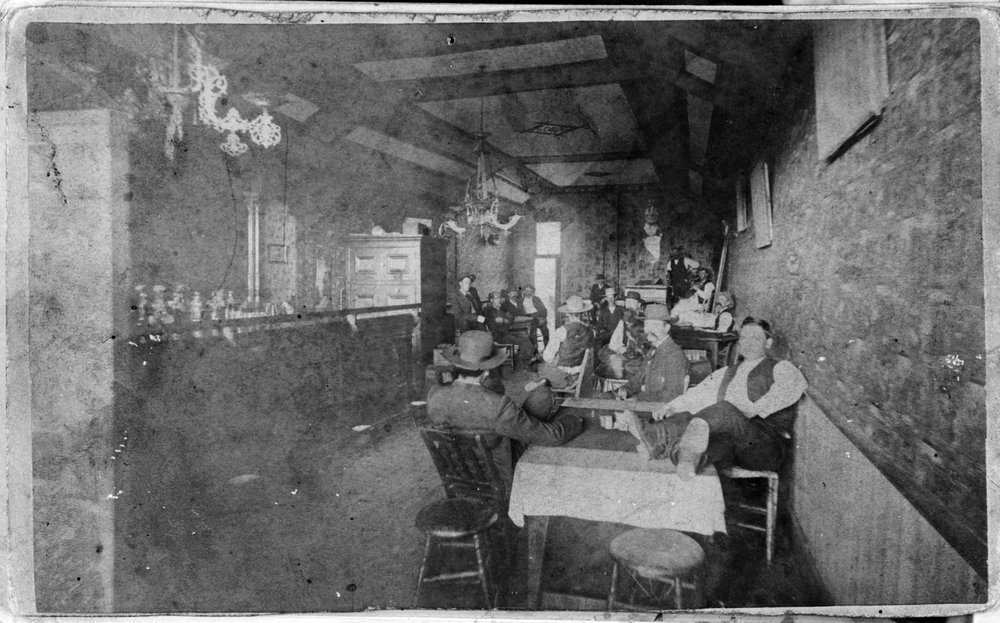Saloons in the Old West were not the ornate Victorian establishments often depicted in Hollywood movies. That’s The Long Branch above, a famous saloon in Dodge City, Kansas during the years of the great cattle drives. A bar might have, like The Long Branch, an ornate carved bar with a big mirror and perhaps a painting of a naked woman behind it, but otherwise it was just a kind of shed with some tables and chairs in it. Often it was no more than a tent with bar furnishings set up inside.
Bars in the Old West sometimes offered music and dancing but almost never had stages for entertainers to perform on. Dance halls were very similar, only with more floor space for the dancing, and they also often occupied tents. Below is the Varieties dance hall in Dodge City:
Dance hall girls were not tricked out ornately either, like the saloon entertainers in Hollywood Westerns, and they didn’t perform as solo dancers or in chorus lines. They danced with the men in the hall, usually while negotiating other services to be performed back where they lived, in boarding houses or tents in a separate part of town, to which prostitution was relegated.
Above is Squirrel Tooth Alice, a famous dance hall girl in Dodge City during the cow town years, in a formal portrait probably used for advertising purposes. She had a gap between her two front teeth and liked to keep prairie dogs as pets — thus her moniker. The Alice I can’t explain — her real name was Libby Thompson.
For the most part, prostitution was not legal in the Old West but it was taxed in the form of “fines”, which was really just a system of licensing. Many towns received the bulk of their income from fines for prostitution — they literally couldn’t afford to run the ladies off.
Surprisingly, saloons and dance halls in the Old West offered a rather sophisticated variety of spirits, freighted in from back east and even from abroad. Fine Bourbons and French wines could be had in the bars of towns of almost any size — any place where a gambler or cowboy or drummer with some coin in his pockets might turn up. Ice was also freighted in so that the saloons could serve cold beer.
Men of the Old West might not have cared much what a bar looked like, but they wanted the finest liquor they could afford in their glasses.
Click on the images to enlarge.




